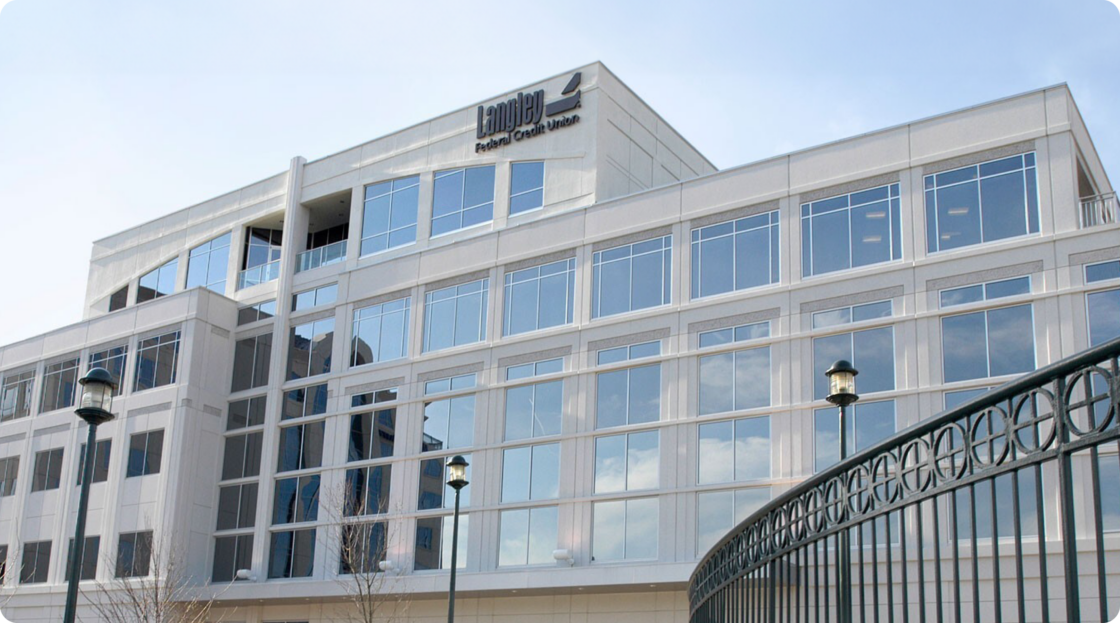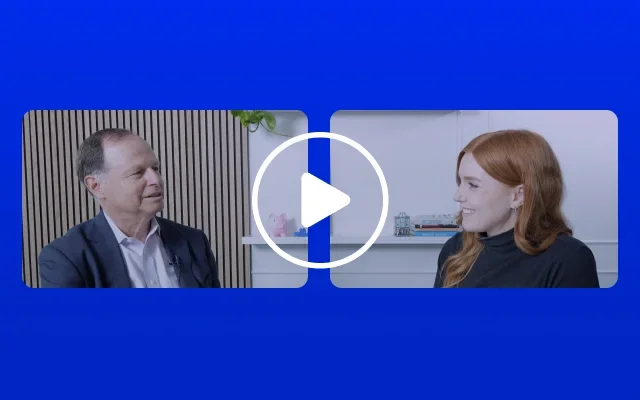July 20, 2023 in Composable origination
Banking on Composable: Episode 2
Join Cassandra Stumer and Celent Senior Analyst Craig Focardi as they discuss how composable technology can help banks keep a competitive edge, offer better customer experiences, and diversify their offerings.

Last month we announced the debut of our new series, Banking on Composable. We’re back again with episode two, (you can watch episode 1 here) where Blend’s Cassandra Stumer sat down with Craig Focardi, senior analyst at Celent. Cassandra and Craig talked about how banks can use composable technology to keep a competitive edge, offer better customer experiences, and diversify their offerings to include more consumer banking services in addition to any existing mortgage products. And if you’d like to see what composable technology and the Indy 500 have in common, watch here or check out the transcript below.
Cassandra Stumer: Craig, thank you so much for joining us today. Welcome to Banking on Composable.
Craig Focardi: Thanks, Cassandra. It’s great to be here. And it’s great to be on Banking on Composable because it’s a real hot topic in the retail banking and lending industries today.
Cassandra Stumer: If you could just give us a little bit more color on your background and how you got into financial services, we’d love to hear it.
Craig Focardi: In terms of how I got here, I actually started my career literally one block up the street at the Federal Home Loan Bank of San Francisco. What they do is they provide financing to the savings and loan industry and now to other types of banks as well. And so I worked in economic research there. And then I worked in the mortgage insurance industry, just a couple blocks south of here, in finance, strategic planning, marketing and product development. Then I spent some time across town at Wells Fargo Home Equity, before becoming CMO (chief marketing officer) for a couple of technology vendors — which is sort of how I became an industry tech analyst and I’ve been doing that for about 20 years now.
Cassandra Stumer: Oh, great. So you are a San Francisco local then. You’ve been here a long time.
Craig Focardi: Yes.
Cassandra Stumer: So you’ve been in the banking industry and in tech for decades. And right now, we know that banks, credit unions, and financial institutions are all facing similar challenges like retaining customers and building deeper customer relationships. In your view, what can banks do at the moment to stand out from the crowd? And especially in this moment where everyone’s clamoring for deposit growth?
Craig Focardi: Great question. Everyone knows that customer engagement is the number one thing that retail banks and retail lenders need to do. But you need to do it better than the competition in order to differentiate yourself and serve the client. And so you also want to have personalization. In lending, there are a number of systems that come into play, there’s data in the loan servicing system, third party data. And so the customer experience is certainly about how you automate that customer engagement, but also how you bring that customer information into that process. And that’s where composability comes in. It creates the flexibility that organizations need in order to customize and personalize that customer engagement and help lenders differentiate themselves from others.
Cassandra Stumer: Everyone’s talking about differentiating. Everyone wants the best and most personalized customer experience. And what’s holding everyone back from not doing it today? What’s holding them back from offering something like an Apple account opening experience?
Craig Focardi: A couple of things are holding organizations back, and part of it is legacy technology that they have. But a lot of financial institution back offices are pretty complex. There’s a lot of legacy technology there. There’s a lot of technical debt that needs to be maintained. They know what they want to do. But doing it can be very expensive and very time consuming. What composability does is make it easier and faster — and oftentimes less expensive — to retool and rebuild those customer experiences.
Cassandra Stumer: So it’s the hard-coded legacy experiences that are making it difficult, right?
Craig Focardi: Yes. As opposed to the hard-coded client server systems or mainframe based solutions. Composability is really built on loosely coupled componentized solutions, right? And so if you think about that, oftentimes people use the analogy of Legos as building blocks. And that’s a good analogy. But one that I like a little bit more is a racing car.
The Indianapolis 500 was just last month and I watched a little bit of it and then when we were talking about this topic, I thought of an IndyCar making a pit stop, right? And a pitstop has to happen in seven seconds. They’ve got to take four wheels off, change tires, put them back on, and fill up the tank with gas. And they actually have re-engineered that process and applied both hardware and software technology in order to make that happen. It takes a second to jack up the car. It literally takes two seconds for four people to take off the lug nuts and the tires. They fill up the gas tank, two more seconds to put the tires back on, another second to put it down. Seven seconds and they go.
And so if you’re late doing that, the competition gets ahead of you. Same thing for lenders. If a new product comes out, they don’t need to roll it out in seven seconds, but it might take them seven months today, right? But if you can shorten that with composability, down to let’s say, seven weeks or less, you’re going to stay ahead of the competition and win the race.
Cassandra Stumer: So it’s not just the front end that we’re changing. It’s like using that analogy for some of these back end processes that need to change and get more efficient as well — and composable can help with that.
So we’re talking a lot about composability in general, and how it can solve the challenge of speed. Like in the IndyCar analogy, which I love. But what are the other benefits of composability that you see? You know, where does it come in with solving these other challenges that banks and credit unions are facing today?
Craig Focardi: In two or three different areas. I know Blend has been focused on mortgage lending, but is more broadly in consumer finance these days. And so composability is useful for financial institutions that are themselves diversifying more, you know, into home equity lending, or auto lending or consumer finance. Oftentimes, you can reuse some of your solutions, such as a digital point of sale solution in different areas of the business. You don’t necessarily want a solution that’s built on a different underlying code base. You can reuse parts of it, more easily integrate it, and customize it for home equity lending, versus mortgage lending. And so that’s a big, big part right there. And that’s both front end customer engagement, as well as integrating two back end loan origination solutions.
Cassandra Stumer: If you have decided, for example, you’re a bank, like we need to get into home equity now. What should they be looking for in a composable platform?
Craig Focardi: Yeah, that’s a great question. Because, you know, in the old days, with hard coding or utilizing other programming languages that were not composable, a lot of it was custom code, and was very expensive to update and change. A composable platform can be thought of as a low-code or no-code solution. And so you’re taking together building blocks of functionality and you’re integrating them. There might be a platform with a very modern graphical user interface for the programmer. In the same way that the retail consumer has their customer experience, the programmer has a better experience there. And they’ll use a local platform to put together the different building blocks of call outs to a credit poll, importing customer data, building the workflow, maybe integrating a document to that and and just doing sort of drag and drop as they build it and test it. And so that’s really critical in a composable solution in order to create and maintain those solutions over time.
Cassandra Stumer: Right, right. And of course you’ve been a champion of better technology in banking for decades. But as you mentioned, banks are sometimes slow to adapt. Do you think now is the time we’re going to see some of these technological shifts? We’re starting to get into composable architecture. Do we foresee that happening in the next five to ten years now? If you make an investment, for example, in some composable technology, and you’re seeing revenue come in? Is that going to shift faster?
Craig Focardi: Yeah, absolutely. I mean, Celent Research, when we go out and survey financial institutions, it shows that cloud computing is one of the top IT spending areas to invest in, and composability is part of that shift from on-premises to the cloud. So that’s a big part of it. And I think we’re really at an inflection point in the industry now, in a number of ways. So I think the next three to five years and beyond are going to be a lot different from the last three or five.
I mean, the first big issue is the fintechs that have come into the industry over the last few years have impacted traditional lenders by showing them what’s possible and have forced them to raise the bar. And now with higher interest rates and lower volume, everybody’s competing for fewer loans in the market. And so how are you going to keep up and capture your share? Well, by building those solutions better, faster, and cheaper, and building the customer engagement is what’s going to get you there.
And then I think the last thing to think about are these big tech firms, you know, Apple, Facebook, Google, Amazon, you know, we’ve seen them come into the payments area, and some of them are getting into the lending area as well. Right now it’s more in the credit card and personal loan area. But they’re moving up market as well. They’re looking at auto financing, mortgage, and home equity. And so lenders can be as good and better as those organizations to defend their turf. And I mean that geographically as well. Those big tech firms are nationwide. And so you don’t see them coming because they’re not in your local market. But you can build those solutions that can compete head-to-head with them.
Cassandra Stumer: So thank you so much for being here and chatting with me today, Craig, I really appreciate it. This was an awesome conversation. We do a little fun thing here. We just like to ask our guests, “what do you do on a busy day, where you are constantly transforming the way that financial services are for the future? What do you do to compose yourself? We call it Compose Yourself. What do you do to relax after a long day?
Craig Focardi: Well, for starters, I need to relax a little bit during the day to get through the long day. And I do that with short, brief power walks. I get up, stretch, walk around, take the dog out. So that gives my mind and my eyes a break from the screen and Zoom calls. So I think that’s a big thing. The other thing is, if you think about composability as enhancing what you’ve got, I’ve been on these walks listening to podcasts. Various podcasts on bank advancements, ChatGPT, and industry developments. So I’ll recharge my batteries and add things to my client engagement that way. So by the time I get to the end of the day, I’m still composed and stay that way.
Cassandra Stumer: You were doing a walk and learn, that’s a great one. Awesome, well thank you so much again for being here. We appreciate your time, and we hope to see you again soon.
Connect on Composable
Cassandra Stumer: Thank you again to Craig for a really great conversation. And now it’s time for our new segment, “Connect on Composable”, where we answer questions from the comments section. And we have one here today.
[question:] Are there any limitations to composable technology that banks should be aware of?
That’s a really great question. And Craig did touch on a few of these challenges just now, but a lot of it comes down to cost and interoperability. Financial institutions already have legacy systems in place, and of course they’re probably still paying for them. So bringing in any new technology adds cost. There is the consideration of implementation, organizational change management, and the challenge of getting all these systems to work together.
Another consideration is ensuring that every part of your tech stack meets your security and compliance standards. And luckily, that’s something that we’re going to tackle in our next video — so stay tuned. But that’s it for this episode of Banking on Composable. Don’t forget to subscribe to our channel down below. If you’d like to see more content like this, drop us a like. It really helps us out. And for more information on composable origination, click the link in the description down below or visit us at www.blend.com. See you next time.

Want to learn more about the composable origination?
Find out what we're up to!
Subscribe to get Blend news, customer stories, events, and industry insights.


